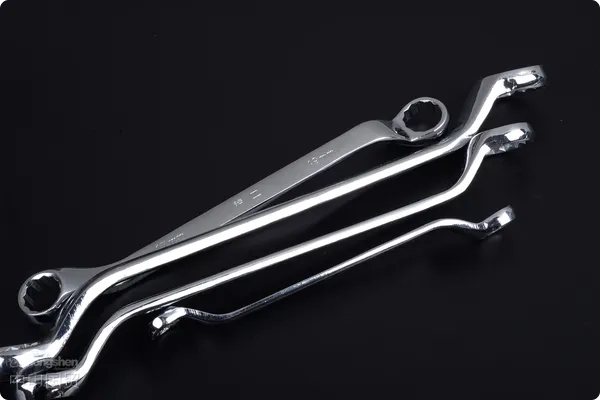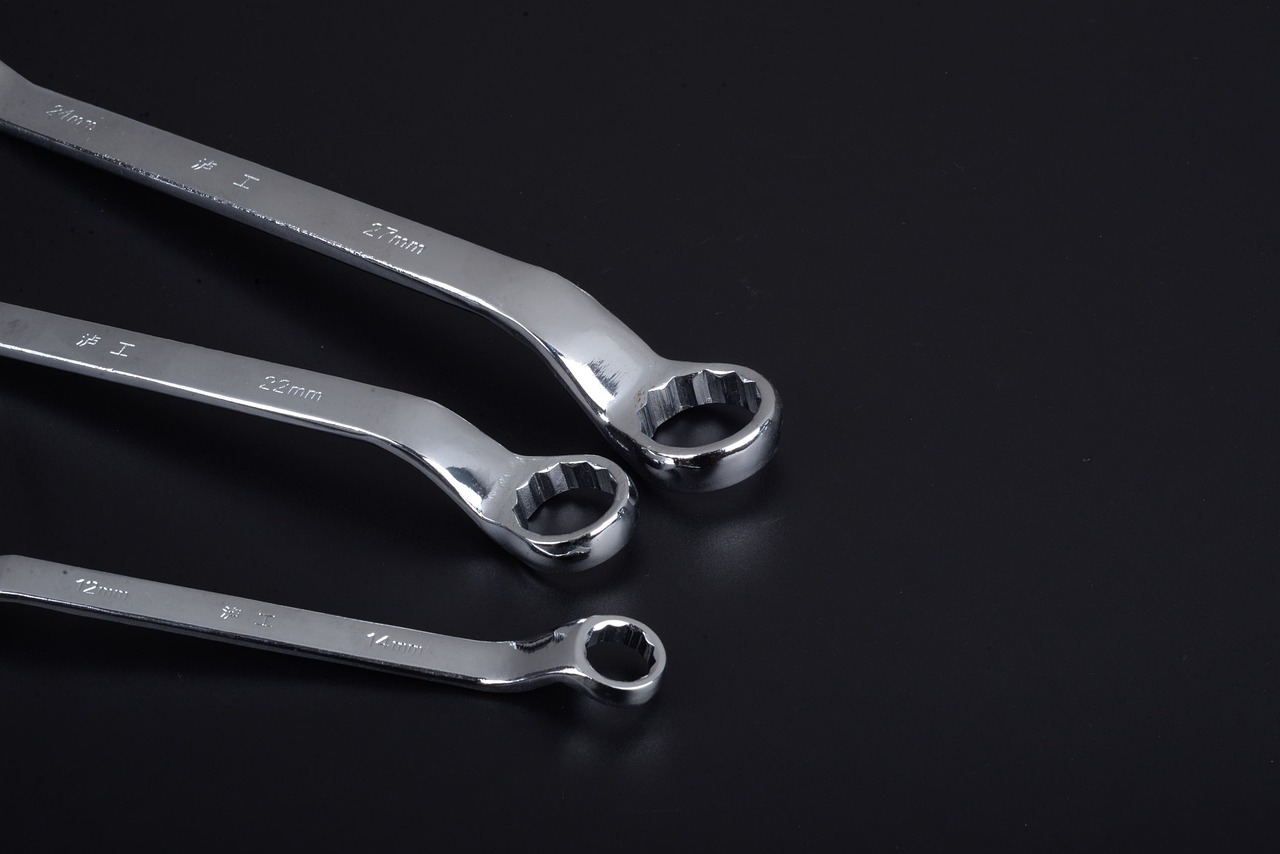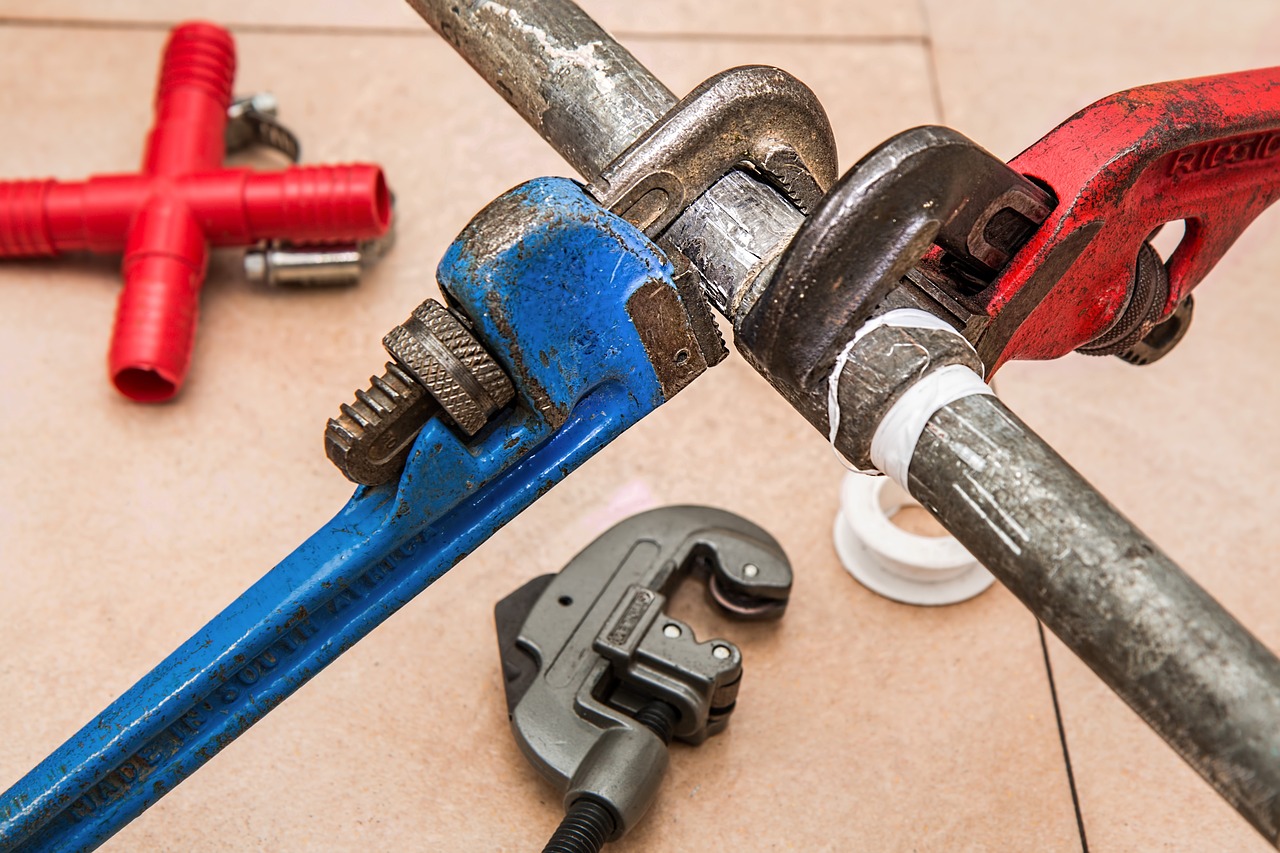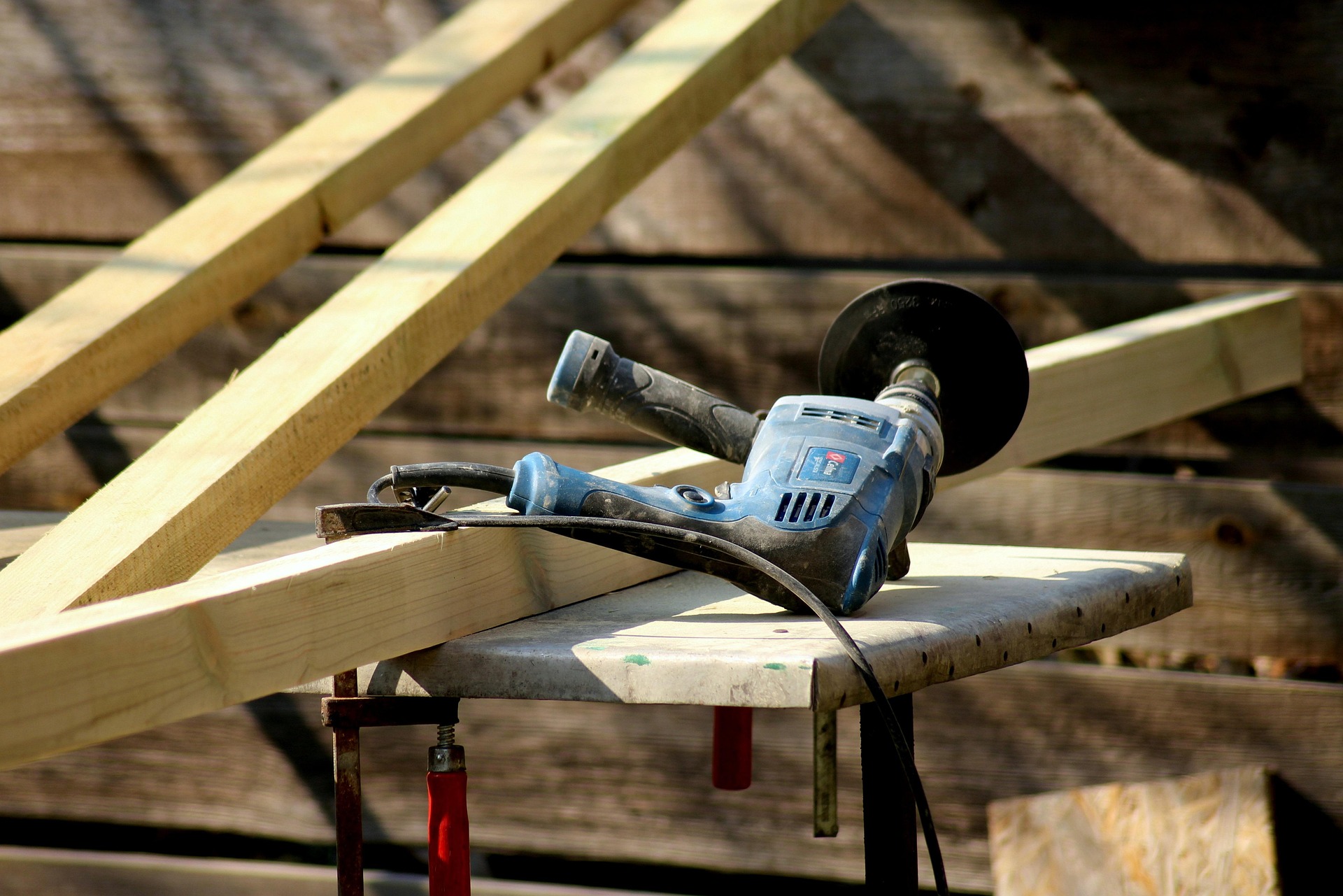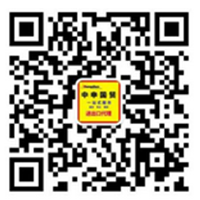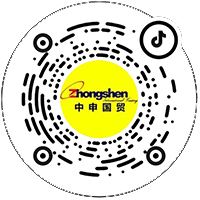After customs release, are your goods really safe?
欧美日韩高清在线观看一区二区 |
国产精品国产三级农村妇女
|
国产一区二区三区 视频 |
欧美精品国产精品日韩系 |
国产免费av一区二区三区 |
最新中文字幕乱码不卡一区 |
日韩在线中文字幕第一页 |
亚洲另类国产精品一区二区三区 |
亚洲欧美国产精品一区二区三区 |
亚洲欧洲日韩一区二区三区 |
日韩精品免费不卡av一区二区 |
亚洲av中的一区二区三区四区 |
青青草av一区二区三区 |
国产精品美女下面无遮挡 |
日本高清视频一区二区在线观看
|
亚洲天堂一区二区三区天堂古代 |
欧美日韩免费一区二三区 |
人妻少妇精品一区毛二区 |
黄页网站免费观看小视频 |
欧美欧美欧美欧美在线观看 |
国产在线视频欧美一区二区三区
|
小泽玛利亚av在线视频 |
久久国产午夜精品理论片3 |
欧美变态口爆一区二区三区
|
国产精品久久久国产盗摄 |
亚洲av日韩精品久久国产 |
91精品人妻一区二区三区蜜臀
|
国产在线视频欧美一区二区三区
|
国产精品网红尤物福利在线 |
亚洲国产精品久久久av |
欧美日韩国产精品系列区
|
黄色三级av在线免费播放 |
国产激情澎湃视频在线观看 |
99久在线国内在线播放免费观看 |
亚洲av极品男人的天堂观看 |
一本之道av免费在线观看 |
久久久精品欧美一区二区免费 |
92精品欧美一区二区三区 |
国产精品美女下面无遮挡 |
一级国产麻豆片在线观看 |
亚洲一区二区三区自拍偷拍
|
一区二区三区日韩欧美国产 |
精品女同一区二区三区亚亚洲洲 |
久久精品国产亚洲一级二级 |
欧美一区2区三区4区网站 |
蜜桃av一区二区三区在线观看 |
色婷婷在线免费观看视频 |
久久久国产成人精品二区 |
欧美日韩一区二区三区福利 |
国产精品黄网站免费进入 |
亚洲综合精品一区二区三区
|
国产一区二区三区精品区在线 |
小泽玛利亚电影免费在线观看
|
成a人片亚洲日本久久69 |
久久久91精品国产一区二区精品 |
国产精品一区二区三区剧情片 |
色天天综合色天天天天看大片 |
亚洲国产精品有码一区二区 |
日韩精品人妻午夜一区二区三区 |
亚洲av电影一区二区在线观看 |
日本高清不卡中文字幕免费 |
日韩国产精品久久久久久亚洲 |
日韩十八线网站操操搞黄色 |
欧美日韩亚洲激情在线观看 |
国产精品视频一区二区三区首页 |
日本东京热视频在线观看 |
欧美精品高清在线一区二区三区
|
欧美日韩国产中文在线观看 |
哪里可以看日本动作电影 |
欧美激情欲高潮视频高清 |
精品国产99久久久成人 |
美女性感黄网站视频久久久 |
午夜精品久久久久9999高清 |
疯狂欧美牲乱大交777 |
亚洲伦理中文字幕一区二区 |
2中文字幕版亚洲无乱码 |
国产成人亚洲综合小说区 |
欧美人式的精品一区二区 |
亚洲一区二区三区欧美精品 |
99人妻精品日韩欧美一区二区三区 |
国产精品一区二区白浆视频 |
97色婷婷成人综合在线观看 |
亚洲国产精品久久男人天堂 |
国产亚洲精品久久午夜玫瑰园 |
日本一区二区三区不卡在线看
|
精品国产亚洲一区二区麻豆 |
av免费精品一区二区三区蜜桃 |
同房后下面流黄黄的液体 |
亚洲国产精品久久久二区 |
国产精品国产三级农村妇女
|
久久麻豆精亚洲av品国产精品 |
日本一区二区三区不卡视频在线 |
国产成人久久久久久久久久久 |
亚洲国产精品久久久久性色 |
免费亚洲色图久久综合网
|
免费主播福利视频韩国日本 |
97影院成人午夜电影在线观看 |
国产理论一区二区三区久久 |
日韩欧美一区二区三区三 |
91精品国产乱码久久蜜桃麻豆 |
国产精品久久精品久久国产 |
国产毛片一区二区三区秋郁浓 |
综合久久久久综合综合久久久久 |
在线观看日韩中文字幕av |
黑寡妇精品欧美一区二区毛 |
日本一区二区国产好的精华液 |
青青久在线视频视频在线 |
在线观看免费视频伊人网 |
你懂的国产精品永久在线
|
97久久夜色精品国产蜜桃 |
欧美激情国产日韩视频一区 |
久久蜜臀av一区二区中文字幕 |
欧美电影日本电影国产电影 |
亚洲国产韩国欧美在线天堂 |
欧美三级韩国三级日本三斤 |
欧美在线不卡视频每天更新 |
日韩欧美国产在线看免费 |
国产露出精品一区二区三区91 |
欧美日韩精品一本二本在线 |
黄色av网址在线免费观看 |
国产成人久久精品一区二区三区欧美 |
午夜视频在线观看精品200 |
91久久精品日日躁夜夜躁国产 |
欧美成人精品第一区二区三区
|
五月婷久久不能精品视频 |
人妻在线视频一区二区三区 |
花野真衣在线观看av中出 |
欧美日韩一区二区三区四区视频
|
亚洲国产精品久久久av |
欧美日韩一区二区三区视频播放
|
蜜臀av一区二区国产在线 |
亚洲av色一区二区三区精品东京热 |
亚洲国产精品久久久二区 |
91久久国产综合久久91 |
小泽玛利亚的电影在线观看 |
精品视频精品91美女视频 |
一区二区三区三级18岁看的 |
日韩中文字幕有码午夜美女 |
午夜精品久久久久9999高清 |
熟女av综合一区二区三区 |
国产精品69精品一区二区三区
|
成人精品一区二区三区电影黑人 |
亚洲国产天堂久久综合网 |
久热这里只有精品视频在线 |
高清日韩一区二区三区视频 |
色婷婷av一区二区三区免费 |
免费特污的视频在线观看亚洲不卡 |
精品国产一区二区免费久久 |
国产精品97久久久久久毛片 |
亚洲综合精品一区二区三区 |
国产午夜免费电影在线观看 |
午夜精品国产一区二区电影 |
日韩国产精品久久久久久亚洲 |
午夜午夜精品一区二区三区 |
91亚洲国产成人久久精品蜜臀 |
小泽玛利亚的电影在线观看 |
欧美激情五月天在线观看 |
一区二区三区四区蜜桃 |
国产精品免费在线一区二区
|
日韩欧美国产中文字幕综合 |
男女污污视频在线观看国产 |
美女18禁国产精品久久久久久 |
91麻豆精品国产91久久久熟女
|
亚洲女同女同女同女同女同69 |
亚洲天堂2020地址免费观看 |
av网站大全在线免费观看 |
飞极速在线观看日韩av |
欧美熟妇一区二区三区仙踪林
|
午夜视频在线观看视频在线观看视频
|
欧美亚洲一区二区久久播 |
久久精品亚州一区二区三区 |
国产一区二区三区网站视频 |
91在线精品免费一区欧美直播 |
国产未成女一区二区三区 |
精品视频美女一区二区三区 |
国内一区二区三区黄色片 |
五月婷婷网在线视频观看 |
国产精品自产在线观看一 |
亚洲限制级电影一区二区 |
亚洲一区二区三区欧美精品
|
亚洲av日韩高清在线观看 |
国产精品极品白嫩在线 |
欧美色老熟妇与性老熟妇 |
日韩欧美中文字幕1234区 |
精品国产18久久久久二 |
亚洲国产精品久久久久性色 |
国产老人一区av二区三区 |
精品一区二区三区成人免费视频 |
欧美一级高清片国产特黄大片一 |
国产黄a三级三级三级av在线看 |
亚洲欧美日韩偷拍一区二区三区
|
91精品国产91久久久久久 |
在线日本一区二区免费观看 |
中文字幕一二三四区亚洲乱码 |
国产一区二区叉叉动态图 |
国产亚洲综合一区二区在线观看 |
十分钟做a小视频免费观看 |
亚洲情色av在线免费观看 |
亚洲中文字幕三级电影 |
一区二区三区四区av中文字幕 |
午夜天堂精品久久久久91色爱 |
欧美国产亚洲自拍第二页
|
欧美激情一区二区三区四区 |
久久精品店一区二区三区 |
日本一区二区在线视频观看 |
大香蕉欧美人妻一二三区 |
国产不卡手机在线观看 |
欧美激情一区二区三区四区 |
欧美日韩一区二区午夜福利 |
大胸熟女少妇一区二区三区 |
欧美精品国产日韩一区二区三区 |
精品视频美女一区二区三区 |
久久精品一二欧美无婷婷 |
91精品国产综合久久久久久蜜月 |
日韩精品毛片一区到三区 |
欧美日韩精品视频一区二区三区四区
|
中文字幕欧美精品人妻一区 |
国产三级在线观看一区二区 |
欧美日韩一区二区三区福利 |
红杏开心五月天中文字幕 |
国产一区二区三区在线啊 |
一区二区三区中文字幕乱码
|
91精品国产色综合久久久蜜香臀 |
91香蕉视频在线观看污污污 |
97久久伊人嫩草一区二区三区 |
国产亚洲精品久久久久久久久动漫
|
亚洲一区二区在线观看的av
|
欧美不卡一区二区在线视频 |
国产女主播一区二区三区四区 |
亚洲天堂男人天堂一区二区 |
亚洲天堂2020地址免费观看 |
久久99久久久国产精品 |
欧美精品一区二区日韩精品
|
日韩av一区二区三区网站 |
亚洲精品久久久噜噜噜久久 |
欧美日韩激情在线看片亚洲 |
99久久免费国产精品2021 |
日韩av在线亚洲一区二区三区 |
免费主播福利视频韩国日本
|
亚洲中文字幕日韩一区二区 |
中文字幕欧美激情一区二区 |
久久精品国产亚洲欧美成人 |
午夜天堂av天堂久久久 |
欧美日韩一区二区啪啪啪 |
好吊色欧美一区二区三区顽频 |
无人区码一码二码三码区 |
亚州国产欧美一区二区三区 |
日本免费播放器一区二区
|
国产一区二区三区水蜜桃 |
欧美国产日韩二区一区在线 |
亚洲黄色av一区二区在线观看 |
大香蕉欧美人妻一二三区 |
国产电影一区二区三区在线观看 |
亚洲午夜精品毛片成人播放 |
国语自产精品视频在线视频学生
|
国产美女捏自己奶头91 |
久久综合九色综合88中文字幕有码 |
色综合天天综合网国产人 |
欧美日韩久久一区二区三区 |
乱色老熟妇一区二区三区 |
日本免费电影在线观看一区二区三区 |
中文字幕日韩高清在线视频 |
欧美一区二区三区激情免费
|
激情综合网五月激情俺也去 |
在线精品国产亚洲av日韩 |
国产肉丝精品91一二区 |
欧美激情一区二区三区啪啪啪
|
青青草原在线视频欧美 |
欧美精品香蕉一区二区三区 |
久久婷婷六月丁香综合啪 |
中国一区二区三区高清电影 |
久久精品美女av一区二区 |
国产午夜精品一区二区三区不卡
|
亚洲av男人的天堂麻豆 |
日韩精品 中文字幕 有码系列
|
亚洲婷婷久久一本青青久久网站
|
手机在线观看国产一区二区三区 |
美女性感黄网站视频久久久 |
亚洲激情五月之综合婷婷 |
国产蜜臀av在线一区尤物 |
亚洲高清日韩精品一区二区三区网
|
中文字幕在线高清第一页 |
日本一区二区在线视频观看 |
中文一区二区三区中高清免费 |
熟女av综合一区二区三区
|
女同性恋精品一二三四区 |
欧美三级在线观看不卡1区
|
久久九九视频免费观看久久九九视频
|
大胸熟女少妇一区二区三区
|
av电影在线观看中文字幕哦 |
亚洲精品在线中文字幕第一页
|
亚洲精品一区二区三区小说 |
91麻豆精品国产91久久久熟女
|
欧美日韩亚洲天堂一区二区 |
91国偷自产中文字幕幕 |
国产一区二区av在线播放 |
日本无限不卡1区2区3区 |
国产精品欧美三级在线观看 |
一区二区三区在线观看日韩 |
久超在线精品av一区二区三区 |
亚洲中文精品久久久久久久38 |
国产成人精品高清在线麻豆 |
色姑娘天天操天天日天天舔
|
国产精品69精品一区二区三区
|
日本一区二区不卡免费观看
|
色婷婷av一区二区三区免费 |
日本高清视频在线网站不卡 |
欧美大片久久久久久久久 |
精品美女视频一区二区三区 |
欧美大片免费观看一区二区 |
亚洲欧美日韩欧美中文字幕 |
国产亚洲欧美日韩在线爱豆 |
精品人人妻人人澡人人爽人人牛牛
|
亚洲成av人一区二区三区 |
欧美大片免费观看一区二区 |
日本男女啪啪啪一区二区三区 |
欧美成人精品一区二区综合免费 |
18禁无遮挡禁无遮挡免费播放 |
久久久国产精品一区久久 |
美女高跟鞋喷水一区二区 |
欧美一区二区在线电影网 |
亚洲av中文有码免费观看 |
久久精品国产亚洲av蜜屁股 |
视频一区二区不中文字幕 |
中文字幕人妻一区二区人妻高清 |
一区二区三区欧美一级爽 |
欧美黄色一区二区在线观看 |
av乱色熟女一区二区三区 |
亚洲天堂精品亚洲天堂精品课程 |
日韩精品中文字幕网在线 |
日韩国产一区二区三区av |
日韩一级黄色片在线观看的
|
一区二区三区在线日本在线视频 |
久久精品国产亚洲av麻 |
欧美一区二区三区高清在线视频 |
欧美成人午夜一区二区三区 |
欧美一区二区在线电影网 |
日韩a国产v亚洲欧美精品 |
免费一区二区三区日韩欧美 |
欧美一区二区三区综合色 |
中文字幕高清在线一区二区三区 |
亚洲欧美国产一区二区三区奶水 |
欧美黄片一区二区三区在线观看 |
欧美午夜一区二区三区精品 |
日本大香蕉一本到免费无一码 |
欧美精品一区二区三区日韩 |
欧美午夜精品久久久久久黑人 |
美女性感黄网站视频久久久 |
国产精品亚洲综合久久久久久久 |
欧美日韩久久一区二区三区
|
精品国产aⅴ一区二区三区在线看
国产蜜臀av在线一区尤物
|
亚洲视频国产视频自拍视频 |
91超碰极品人人人人成人 |
国产精品综合视频一区二区三区 |
新片青青澡久久久久久久久精品
|
欧美不卡一区二区在线视频
|
欧美日韩免费一区二三区 |
99国产精品久久久久久久久 |
国产精品福利网站在线观看 |
日本中文字幕视频在线观看 |
91在线精品免费一区欧美直播 |
亚洲成a人片在线观看无遮挡 |
亚洲日本精品麻豆一区国产 |
国产精品色午夜免费视频69 |
婷婷激情综合亚洲五月色 |
国产黄a三级三级三级av在线看 |
国产日韩欧美视频在线播放 |
亚洲av午夜精品久久久 |
国产农村妇女一二三区 |
yyy6080韩国三级理论久久 |
精品人妻少妇系列女友系列 |
久久碰国产一区二区三区 |
国产精品色午夜免费视频 |
国内精品自线一区二区三区视频
|
精品视频美女一区二区三区 |
亚洲第一区欧美日韩在线 |
成人黄网站色视免费大全 |
亚洲国产日韩精品一区二区三区 |
欧美高清亚洲一区二区在线观看 |
亚洲午夜福利国产门事件 |
国产综合av在线免费观看
|
国语自产精品视频在线视频学生
|
欧美国产亚洲自拍第二页 |
激情五月婷婷丁香久久综合网 |
伊人天堂午夜精品福利网 |
欧美激情五月天在线观看 |
亚洲激情五月之综合婷婷 |
亚洲综合色就色在线观看 |
久热这里只有精品视频在线 |
亚洲天堂男人天堂一区二区 |
国产精品宅福利无圣光视频 |
中文字幕欧美精品人妻一区 |
国产亚洲欧美日韩看国产 |
中文字幕一二三四区亚洲乱码
|
欧美中文字幕一二三四乱码 |
日本精品动漫一区二区三区 |
日韩欧美中文字幕一区二区三区 |
国产精品白丝av嫩草影院 |
国产亚洲一区二区三不卡 |
欧美日韩精品一区二区中文字幕 |
国产午夜精品理论片免费视频 |
蜜臀久久久久精品一区二区三区 |
日韩欧美中文字幕1234区 |
雅日韩欧美一区二区三区 |
亚洲欧美中文日韩另类特殊 |
国产成人亚洲综合小说区 |
亚洲福利欧美日韩午夜一区 |
91久久精品一区二区三区大 |
国内精品自线一区二区三区视频 |
99re热自拍视频在线 |
妖精视频一区二区三区四区 |
午夜国产三级一区二区三 |
在线精品国产亚洲av日韩 |
一级国产麻豆片在线观看 |
国产精品久久久亚洲天堂 |
日韩a人毛片精品无人区乱码 |
国产a级精品一区二区免费看视频 |
欧美精品久久婷婷人人澡 |
亚洲av噜噜噜一区二区三区 |
欧美极品一区二区在线观看 |
亚洲精品色婷婷在线观看 |
日本精品动漫一区二区三区 |
久久这里只有精品好国产 |
国产精品亚洲精品日韩已满十八小 |
久久国产午夜精品理论片3 |
乱人伦人妻中文字幕禁忌1 |
国产成人麻豆午夜精品影院游乐网 |
欧美国产日韩二区一区在线 |
久久精品亚州一区二区三区 |
精品日韩亚洲一区二区三区 |
蜜桃91精品一区二区三区
|
日本片一区二区在线视频 |
欧美一区二区三区激情免费 |
日韩欧美国产一区二区免费 |
色播五月麻豆激情综合网 |
亚洲精品色婷婷在线观看 |
国产精品双马尾后入爆操 |
国产欧美一区二区在线观看 |
青青视频在线观看一级二级 |
一区二区国产精品三区在线电影 |
一本色道久久99精品综合 |
99riav国产精品视频一区
|
日本av电影一区二区在线观看 |
国产欧美日韩精品一区二区在线 |
亚洲欧美一区二区三区爽爽爽
|
风流老熟女一区二区三区l |
亚洲国产日韩精品一区二区三区 |
久久精品女人18国产毛片 |
亚洲综合视频在线免费观看 |
国产av一区二区日夜精品剧情 |
国产亚洲欧美日韩看国产 |
91精品久久久久久粉嫩 |
亚洲一区二区三区四区免费看 |
亚洲综合精品一区二区三区 |
久久久国产精品一区久久 |
国产不卡手机在线观看 |
久久99综合国产精品亚洲首页 |
手机在线一区二区三区观看
|
久久精品亚洲熟女av蜜謦 |
亚洲精品中文字幕乱码二区 |
日韩精品一区二区三区色 |
久久久国产综合av天堂 |
欧美国产日本一区二区三区 |
国产欧美在线一区二区三 |
欧洲精品一区二区三区中文字幕 |
国产主播欧美日韩在线播放 |
国产精品一区二区剧情熟女
|
国产精品色午夜免费视频 |
欧美不卡一二三在线视频 |
亚洲一区二区三区欧美精品 |
精品国产乱码久久久久久软 |
制服丝袜中文字幕一区二区
|
欧美中文字幕精在线不卡 |
日韩不卡一区二区在线观看 |
久久国产夜色精品鲁鲁99 |
亚洲欧美日韩加勒比在线 |
国产亚洲一区二区三区综合片 |
亚洲黄色av一区二区在线观看 |
激情五月婷婷丁香久久综合网 |
欧美综合在线观看一区二区 |
欧美一区二区自偷自拍视频 |
丝袜人妻电影一区二区三区 |
99热这里只有精品2023 |
欧美精品一本久久男人的天堂 |
久久精品女人18国产毛片 |
亚洲av成人一区二区三区在线 |
99riav国产精品视频一区
|
中文字幕 日韩经典 人妻 |
国产三级在线观看一区二区 |
国产精品亚洲综合久久婷婷 |
久久av一区二区三区四区五区 |
一区二区三区四区av中文字幕 |
亚洲欧美日本在线视频观看 |
国产亚洲精品久久久一区 |
亚洲人妻一区二区三区av |
欧美一区二区三区亚洲一区 |
国产精品夜夜春夜夜爽久久小 |
精品国产日韩欧美另类免费观看 |
精品人妻潮喷久久久又裸又黄 |
国产91亚洲精品久久久 |
97色伦在色在线播放免费 |
欧美综合在线观看一区二区 |
精品久久久久久亚洲一区二区三区
|
黄色三级av在线免费播放 |
一区二区三区欧美一级爽 |
久久国产精品男人的天堂av |
极品美女扒开粉嫩小的漫画 |
日韩特一级a毛大片欧美大片 |
综合自拍亚洲综合图区欧美
|
亚洲欧美午夜精品一区二区三区 |
国产a级精品一区二区免费看视频 |
88精品视频一区二区三区四区 |
国产女人乱人伦精品一区二区 |
日本大香蕉一本到免费无一码 |
亚洲va欧美va天堂v国产综合 |
一区二区国产精品三区在线电影 |
国产中文字幕高清在线观看 |
91视在线国内在线播放 |
国产一区二区在线播放黄色高清 |
久久精品国产亚洲欧美成人 |
亚洲一区二区三区高清影片 |
欧美日韩一码二码三区四区 |
成片免费视频观看大全一起草 |
禁止十八岁看污污网免费 |
国产盗摄一区二区三区厕所视频 |
日本一区二区免费在线视频 |
久久99国产综合精品伦理片
|
免费大片a一级久久国产 |
国产亚洲精品综合一区二区 |
小说区图片区偷拍区视频 |
最新国产日韩欧美中文在线 |
欧美亚洲国产日韩品久久 |
色婷婷一区二区三区四区成人
|
亚洲综合色就色在线观看 |
欧美激情一区二区三区精品 |
欧美亚洲成人一区二区三区
|
成人欧美一区二区三区在线小说 |
日韩欧美一区二区三区三 |
亚洲人成网站18禁止天堂 |
亚洲av成人一区国产精品 |
天天天天天日夜夜夜夜夜夜操 |
日韩黄色成人影院在线观看 |
色姑娘天天操天天日天天舔 |
成人黄页视频在线播放 |
国产高颜值美女主播在线 |
亚洲区激情区图片小说区 |
男人av天堂男人的网站 |
99久久免费国产精品2021 |
99久久一区二区三区免费 |
中文字幕加勒比视频二区 |
亚洲av成人一区二区三区在线 |
亚洲国产精品无石码久久 |
日韩夫妻精品熟妇人妻一区
|
亚洲产国偷v产偷v自拍一区 |
亚洲国产色一区二区三区 |
婷婷激情综合亚洲五月色 |
国产精品亚洲美女av网站 |
亚洲欧美一区精品中文字幕 |
国产成人女人毛片视频在线 |
欧美日韩加勒比一二三区 |
好吊色欧美一区二区三区顽频 |
国产另类av一区二区三区 |
国产一区二区精品久久呦 |
亚洲天堂一区二区三区在线观看 |
后入亚洲美女一区二区三区 |
亚洲欧美人成综合在线另 |
午夜亚洲精品久久久久久小说 |
日韩av一区二区三区免费观看
|
四季av一区二区三区中文字幕 |
一区二区三区中文字幕乱码 |
黄色欧美精品一区二区三区 |
国产欧美一区二区三区奶水 |
欧美韩一区二区三区电影免费看 |
久久久国产精品一区久久 |
国产一区二区日韩欧美在线 |
国产成人亚洲欧美在线二区小说 |
精品一区二区三区av在线 |
欧美一区二区在线观看不卡
|
日韩欧美国产一区二区在线 |
精品久久久久久人妻熟妇 |
亚洲成人精品国产一区二区 |
免费久久久久久中文字幕 |
制服丝袜视频一区二区三区 |
最近高清中文字幕一区二区 |
久久久精品少妇一区二区三区 |
综合久久五十路熟女中出 |
欧美精品天堂一区二区不卡 |
亚洲精品区国产精品99 |
白嫩丰满少妇一区二区三区 |
av乱色熟女一区二区三区 |
亚洲国产欧美亚洲国产欧美 |
未满十八勿进黄网站一区不卡 |
欧美色偷偷在线视频播放 |
久久产精品一区二区三区日韩 |
日本人妻久久久久久久久 |
美女性黄久久久国产精品 |
国产免费一区二区三区性色
|
国产欧美韩日一二精品专区 |
久久精品国产亚洲欧美成人 |
国产小黄片免费观看小黄片 |
极品少妇被弄得99精品欧美 |
中文字幕黄色在线免费观看 |
欧美亚洲国产日韩在线观看 |
高清亚洲中文字幕一区二区 |
欧美日韩精品综合一区二区 |
亚洲综合色一区二区三区在线 |
精品人妻av综合一区二区 |
综合久久久久综合综合久久久久 |
99久久精品氩 99久久久 |
黄色a级三级三级三级的电影 |
日韩欧美国产中文字幕综合 |
国产在线精品一区在线观看麻豆
|
日本免费中文字幕一区二区久久 |
国产精品久久久亚洲综合天堂 |
国产欧美韩日一二精品专区 |
欧美一区二区在线观看不卡 |
精品国产熟女一区二区三区 |
亚洲国产精品有码一区二区 |
久热这里只有精品视频在线 |
今天有什么电影可以看在电影院 |
99久久精品免费看国产一区
|
一区二区三区在线日本在线视频 |
日韩精品a欧美精品a亚洲精品 |
日本a级一区二区资源网站 |
99精品国产一区二区三区网站 |
国产亚洲精品久久久一区
|
欧美成人高清视频在线播放 |
92精品欧美一区二区三区 |
国产在线视频欧美一区二区三区 |
精品国产污污在线18禁 |
最好看的日韩中文字幕电影
|
亚洲av日韩一级片免费看 |
国产精品亚洲美女av网站 |
亚洲av中的一区二区三区四区
|
国产成人久久精品一区二区三区欧美 |
亚洲日本中文字幕高清在线 |
国产丝袜美女av一区二区三区 |
午夜精品久久久久久久2023 |
欧美一区二区三区亚洲九色 |
亚洲一区二区三区在线高清 |
日本免费一区最新在线观看 |
欧美黄色免费网站18禁久久 |
亚洲欧美色欧另类欧日韩 |
国产伦精品99久久自偷国产 |
大胸熟女少妇一区二区三区 |
十分钟做a小视频免费观看 |
最近日韩一区二区三区四区av |
国产精品亚洲av蜜桃三区 |
日韩a人毛片精品无人区乱码 |
日韩欧美一区二区三区中出内射 |
精品一区二区三区av在线 |
中文字幕黄色综合网免费 |
国产一区二区三区精品区在线 |
国产亚洲一区二区三区综合片 |
蜜桃视频一区二区三区在线观看 |
精品一区二区三区av在线
|
99久久精品免费看国产四区 |
亚洲精品我不卡中文字幕乱码 |
日韩人妻精品一区二区三区在线 |
欧美激情一区二区三区四区
|
神马午夜福利影院在线观看 |
护士精品一区二区三区99 |
亚洲精品成人av一区二区 |
国产伦精品99久久自偷国产 |
精品日韩av高清一区二区三区 |
久久精品一区二区中文字幕 |
农村老女人久久毛片免费看 |
亚洲av极品男人的天堂观看 |
久久精品美女av一区二区 |
亚洲欧洲日韩一区二区三区
|
亚洲国产精品有码一区二区 |
欧美日韩久久一区二区三区 |
欧美一区二区三区激情免费 |
色婷婷av一区二区三区免费 |
91偷国自产一区二区三区蜜臀 |
欧美午夜精品一区二区三 |
国产成人一区二区青青草原
|
一本大道综合伊人精品热热
|
欧美日韩3一区二区三区精品 |
欧美亚洲成人一区二区三区
|
国产精品极品白嫩在线 |
av电影在线观看中文字幕哦 |
国产乱码欧美乱码在线视频 |
青青草亚洲综合成人一区 |
国产亚洲精品久久久一区 |
日韩国产亚洲一区二区三区 |
欧美猛少妇色xxxx久久久久久 |
国产黄色一级电影一区二区 |
欧美日本一区二区免费看 |
欧美日韩国产中文在线一区二区 |
亚洲成人日韩高清在线观看 |
开心五月激情五月婷婷综合网 |
国产精品蜜臀av在线一区
|
成a人片亚洲日本久久69 |
99国产精品久久久久久久久 |
日本一区二区不卡免费观看 |
亚洲无人区乱码中文字幕 |
中文字幕日韩欧美日韩在线 |
亚洲情色av在线免费观看 |
亚洲日本国产一区二区精品成人
|
国产一区二区叉叉动态图 |
欧美精品国产日韩一区二区三区
|
一级国产麻豆片在线观看 |
国产精品综合视频一区二区三区 |
国产视频日韩视频欧美视频
|
国产精品一区二区剧情熟女 |
久久这里只有精品一区二区三区 |
国产亚洲av另类一区二区三区 |
最近中文字幕高清免费大全 |
欧美日韩国产中文在线一区二区 |
国产高颜值美女主播在线 |
国产精品综合视频一区二区三区 |
婷婷99精品国产97久久综合 |
黑寡妇精品欧美一区二区毛
|
免费一区二区三区日韩欧美 |
日本人妻与家公的伦理片 |
亚洲精品九九九人妻av |
欧美日韩久久久久免费看 |
日韩不卡一区二区在线观看 |
国产精品福利网站在线观看 |
av电影在线观看中文字幕哦 |
91精品国产薄丝高跟在线播 |
日韩av一区二区中文字幕 |
国产女同av一区二区三区 |
国产黄色一级电影一区二区 |
欧美大片久久久久久久久 |
在线播放国产久草性av |
国产成人91色精品免费网站 |
欧美日韩国产中文在线一区二区 |
亚洲中文字幕一区二区三区四 |
日本东京热视频在线观看 |
国产91色综合久久免费分享 |
在线看的中文av网址导航 |
国产精品久久久精品一级 |
蜜臀久久人妻99精品三区四区 |
欧美日韩亚洲中文字幕一区 |
人人妻人人澡人人爽人人精品不卡 |
不卡在线一一区二区三区91
|
综合自拍亚洲综合图区欧美 |
国内偷拍高清精品视频免费 |
免费特污的视频在线观看亚洲不卡
|
国产精品免费在线一区二区
|
日本东京热久久成人免费电影 |
精品免费久久久久久影院 |
免费无遮挡午夜视频网站 |
欧美极品色午夜视频在线观看 |
精品国产一区二区三区蜜臂 |
久久精品亚洲熟女av蜜謦 |
日韩黄色成人影院在线观看 |
美美女高潮毛片视频免费 |
欧美亚洲国产日韩品久久 |
91精品久久久久久粉嫩 |
亚洲av另类激情一卡二卡不卡 |
69堂凹凸视频在线观看 |
国产av一区二区极品六六
|
久久久精品少妇一区二区三区 |
中文字幕欧美老熟妇一区二区
|
久久国产一区二区二区三区 |
欧美日韩久久久久免费看 |
一区二区日韩精品中文字幕 |
黄黄黄污污污的免费网站 |
日本高清视频在线网站不卡 |
久久久久国产一区二区三区下载 |
国产一区二区三区网站视频 |
亚洲国产色一区二区三区 |
久久精品女人天堂av免费版
|
精品国产精品网麻豆系列 |
青青草av一区二区三区 |
黄页男女视频网址大全免费观看 |
欧美精品欧美一区二区精品久久久
|
我露出雪白的奶头给我同桌吃
|
亚洲精品一区二区三区小说 |
精品女同一区二区三区亚亚洲洲 |
欧美精品久久一区二区三区四区
|
欧美一区二区三区高清在线视频 |
北岛玲成人精品一区二区三区 |
国产av一区二区极品六六 |
欧美在线不卡视频每天更新 |
亚洲午夜一级艳片欧美精品
|
国产精品清纯白嫩美女s
|
日本不卡免费一区二区三区 |
飞极速在线观看日韩av |
少妇人妻精品一区三区二区 |
亚洲欧美国产一区二区三区奶水 |
手机在线观看网址你懂的 |
精品久久国产老人久久综合 |
精品人妻久久久久久888不卡
|
欧洲精品一区二区三区中文字幕 |
久久精品久久久久一区二区 |
白嫩丰满少妇一区二区三区 |
欧美欧美欧美欧美在线观看 |
久久这里只有精品好国产
|
免费久久久久久中文字幕 |
性感91白丝美女在线精品 |
国产毛片精品国产一区二区三区 |
色婷婷六月亚洲婷婷国产 |
人妻少妇电影一区二区三区四区 |
国产欧美日韩精品一区二区在线 |
亚洲欧美日韩精品免费观看 |
亚洲欧洲成人va在线观看 |
免费主播福利视频韩国日本 |
久热这里只有精品视频在线 |
一区二区三区亚洲欧美日韩人色 |
国产精品亚洲av蜜桃三区 |
午夜精品久久久久9999高清 |
日本四十路五十路六十路 |
国产不卡手机在线观看 |
韩国三级华丽外出在线观看 |
日韩欧美国产中文字幕综合 |
麻豆一区二区国产三区亚洲人 |
欧美午夜精品久久久久久黑人 |
欧美韩一区二区三区电影免费看 |
欧美日韩精品一区二区中文字幕 |
日本精品免费偷拍小视频网 |
中文高清在线中文字幕日韩 |
在线精品国产亚洲av日韩 |
久久97久久99久久综合欧美 |
国产精品视频一区二区三区首页 |
欧美日韩高清在线观看一区二区
|
国产高清精品免费在线观看 |
国产成人精品综合久久久久换脸 |
最新国产美女一区二区三区 |
日韩在线一区二区三区中文字幕 |
激情五月婷婷丁香久久综合网 |
日本一区二区三区不卡视频在线 |
亚洲国产成人在人网站天堂 |
国产欧美一区二区在线观看 |
国产黄片一区二区三区四区 |
亚洲av伊人久久综合小说 |
久久av一区二区三区四区五区 |
欧美一区二区三区高清在线视频 |
久久国产精品骚熟女av |
日韩欧美国产一区二区免费 |
综合自拍亚洲综合图区欧美 |
欧美日韩国产三级一区二区三区
|
国产欧美大陆日韩精品亚洲综合
|
中文一区二区三区中高清免费 |
成人欧美一区二区三区在线小说 |
欧美日韩国产中文一区二区 |
噜噜噜久久亚洲精品国产品
|
日本人妻与家公的伦理片 |
日韩av一区二区三区免费观看 |
久久精品亚洲欧美日韩精品中文字幕 |
免费亚洲色图久久综合网 |
国产精品亚洲一区二区久久 |
狠狠深爱婷婷久久综合区一 |
一区二区三区久久久久国产精品 |
欧美激情五月天在线观看 |
亚洲精品国产剧情久久9191
|
国产精品清纯白嫩美女s |
国产精品激情视频一区二区三区
|
欧美韩一区二区三区电影免费看
|
亚洲无人区乱码中文字幕 |
国产一区二区三区色噜噜91 |
色哟哟一区二区三区中文字幕 |
新片青青澡久久久久久久久精品
|
色狠狠一区二区三区蜜桃av |
亚洲中文字幕精品熟女一区
|
久久久91精品国产一区二区精品 |
国产美女直播在线一区二 |
欧美三级在线观看不卡1区 |
亚洲国产日韩精品一区二区三区 |
男人天堂国产在线2019 |
久久999欧美日韩国产 |
国产五月色婷婷六月丁香视频
|
国产女主播一区二区三区四区 |
久久久精品午夜免费不卡 |
粉嫩一区二区三区精品视频 |
高清亚洲中文字幕一区二区 |
国产自拍偷拍在线一区二区 |
欧美黄片一区二区三区在线观看
|
亚洲黄色av一区二区在线观看
|
婷婷丁香蜜桃激情五月天 |
日韩精品人妻午夜一区二区三区 |
日韩 中文字幕高清最新 |
亚洲国产精品久久久二区 |
18禁黄色裸体网站入口 |
亚洲一区二区三区欧美精品 |
中文字幕日韩欧美日韩在线 |
97影院成人午夜电影在线观看 |
国产电影一区二区三区高清 |
亚洲人成一区二区三区不卡 |
久久精品国产亚洲av蜜臀 |
女同熟女少妇同性少妇女同 |
国产综合久久精品东京热 |
亚洲av资源网站在线观看 |
人妻少妇电影一区二区三区四区 |
国产免费av一区二区三区 |
欧美一区二区三区四区五区 |
亚洲国产精品美女久久久久久久 |
中文字幕欧美一区二区三区 |
国产69精品久久777的观感 |
国产激情久久久久久熟女 |
视频区 图片区 小说区免费 |
午夜国产三级一区二区三 |
女同熟女少妇同性少妇女同 |
国产区综合另类亚洲欧美 |
亚洲成人日韩高清在线观看 |
亚洲一区二区三区毛带片 |
日韩精品中文字一区二区 |
爽国产成人精品午夜视频 |
在线观看特黄片一区二区二区 |
妖精视频一区二区三区四区 |
国产欧美韩日一二精品专区 |
亚洲精品九九九人妻av |
美日韩人妻精品一区二区三区 |
欧美一区二区在线电影网 |
亚洲一区二区三区四区五区六 |
免费亚洲视频在线观看99 |
蜜臀av一区二区国产在线 |
熟女精品视频一区二区视频 |
88精品视频一区二区三区四区 |
久久精品国产av一区二区三区 |
久久精品国产亚洲av日韩 |
99精品这里只有免费精品 |
欧美久久免费鲁丝一二区 |
日本男女啪啪啪一区二区三区 |
国产精品久久久久福利电影 |
一区二区三区高清视频精品 |
精品日韩一区二区三区中文字幕
|
日韩a人毛片精品无人区乱码 |
国产理论一区二区三区久久 |
久久五月婷婷爱综合亚洲 |
中文一区二区三区中高清免费 |
国产一区二区三区水蜜桃 |
欧美一区二区三区综合色 |
亚洲av熟女国产一区二区性色 |
色哟哟一区二区国产精品 |
手机在线观看国产一区二区三区
|
国产精品久久久亚洲综合天堂 |
欧美极品一区二区在线观看 |
日韩精品一区二区三区四区不卡 |
网友自拍偷拍视频一区二区 |
91福利社区在线试看一分钟 |
一本色道69色精品综合久久 |
日韩精品一区二区三区不长视频 |
国产婷婷香蕉av一区二区三区 |
黄黄黄污污污的免费网站 |
久久久国产精品一区久久 |
日本黄色中文字幕不卡在线 |
2022国产精品黄色片 |
中文字幕黄色综合网免费 |
欧美三级在线观看不卡1区 |
精品久久国产老人久久综合 |
男人av天堂男人的网站 |
精品一区二区三区高潮视频 |
欧美日韩加勒比激情系列 |
欧美日韩亚洲天堂一区二区 |
欧美精品国产精品日韩系 |
日本中文字幕视频在线观看 |
日本一区二区三区视频在线播放 |
欧美日韩国产中文在线观看 |
中文字幕欧美激情一区二区 |
精品国产一区二区三区蜜臂 |
国产一区二区叉叉动态图 |
欧美日韩加勒比激情系列 |
午夜性色一区二区三区不卡视频 |
91精品蜜臀在线一区尤物 |
成人污污视频在线观看网站
|
日韩电影中文字幕在线观看 |
欧美精品一区二区三区日韩 |
欧美激情一区二区三区精品 |
人妻少妇精品一区二区三区视频 |
三级av电影在线免费观看 |
亚洲综合色一区二区三区在线 |
欧美久久免费鲁丝一二区 |
伊人久久大香线蕉综合bd高清 |
成人黄页视频在线播放 |
久久久亚洲最大ⅹxxx |
爱丝官网一区二区午夜福利视频 |
激情久久av区二区av |
欧美日韩亚洲中文字幕二区网址 |
日本a级一区二区资源网站 |
欧美日本一道道一区二区 |
久久91精品国产丰满美女 |
一区二区三区中文字幕四季 |
精品视频精品91美女视频 |
十分钟做a小视频免费观看 |
国产毛片一区二区三区秋郁浓 |
亚洲精品乱码久久久久久电影 |
欧美日本一道道一区二区 |
国产精品高清国产三级国产a∨ |
国产视频日韩视频欧美视频
|
五月婷久久不能精品视频 |
欧美日韩久久一区二区三区
|
亚洲国产成人精品毛片九色 |
久久久精品午夜免费不卡 |
爱丝官网一区二区午夜福利视频 |
国产精品妇女久久久久久 |
亚洲午夜精品毛片成人播放 |
国产丝袜美女av一区二区三区 |
欧美一区二区在线电影网 |
日本一区二区三区不卡视频在线
|
日韩特级黄色大片在线观看 |
亚洲精品中文字幕乱码二区 |
国产精品1区二区三区 |
久久99精品久久久免费看永久 |
亚洲综合国产一二三四五区 |
综合久久五十路熟女中出 |
国产露出精品一区二区三区91 |
日本不卡免费一区二区三区 |
日本一区二区三区不卡在线看 |
国产一区二区三区亚洲综合 |
91精品国产综合久久香蕉观看 |
亚洲美女日韩精品色图在线视频 |
五月激情综合婷婷六月久久
|
欧美日一区二区三区精品 |
亚洲欧美国产乱子精品观 |
91精品国产综合久久久久久蜜月
|
国产亚洲欧美一区二区精 |
色综合天天综合网国产人 |
午夜性色一区二区三区不卡视频
|
中文字幕人妻系列东京热 |
亚洲十八禁在线免费观看 |
精品国产一区二区色老头 |
激情五月婷婷丁香六月 |
久久婷婷六月丁香综合啪 |
久久精品国产亚洲av蜜屁股 |
国产主播一区二区三区在线观看 |
在线小视频一区二区三区 |
一区二区三区亚洲中文字幕 |
色婷婷av一区二区三区免费 |
亚洲国产日韩欧美高清片 |
日本黄色亚洲成人日韩欧美 |
国产拍欧美日韩视频一区 |
欧美电影日本电影国产电影 |
亚洲va欧美va天堂v国产综合 |
精品国产乱码久久久久久软 |
麻豆一区二区国产三区亚洲人 |
久久精品人妻一区二区三区一 |
国产自拍三级视频在线观看 |
亚洲成a人片在线观看yau |
午夜天堂av天堂久久久 |
国内精品自线一区二区三区视频 |
欧美成人精品视频一区二区 |
亚洲一区二区三区视频在线播放 |
一区二区三区在线观看日韩 |
国产吧中文字幕欧美日韩 |
黄黄黄污污污的免费网站 |
欧美黄色免费网站18禁久久
|
欧美日韩中文字幕每日更新 |
精品一区二区三区在线网站 |
亚洲天堂精品亚洲天堂精品课程 |
国产欧美另类久久久精品不卡
|
久久国产精品一区二区三区精品 |
精品久久久久久亚洲一区二区三区
|
国产精品亚洲二区在线看 |
国产精品性色一区二区三区在线蜜
|
色婷婷综合午夜色荡天天 |
同房后女生下面有黄色分泌物 |
中文字幕欧美激情一区二区 |
国产欧美日韩亚洲第一第二页
|
国产精品国产三级国产剧情 |
日韩欧美中文字幕在线四区 |
国产精品一区二区色蜜蜜 |
日韩人妻精品久久久久久 |
欧美日韩激情在线看片亚洲 |
北岛玲成人精品一区二区三区 |
一本大道综合伊人精品热热 |
最好看的日韩中文字幕电影 |
国产精品亚洲专区一区二区三区 |
欧美三级韩国三级日本三斤 |
91色综合久久夜色精品国产 |
久久五月婷婷爱综合亚洲 |
18禁黄网站禁片免费观 |
久久精品国产一区二区涩涩 |
日韩av成人影院在线观看 |
欧美激情一区二区三区四区 |
国产亚洲av另类一区二区三区
|
三级av电影在线免费观看 |
免费欧美一区二区三区四区 |
国产欧美日韩综合二区三区 |
91精品国产综合久久久久久蜜月 |
亚洲区激情区图片小说区 |
亚洲成av人黄网站在线观看 |
中文一区二区三区中高清免费 |
国产三级在线播放视频不卡
|
国产精品久久久亚洲天堂 |
国产网曝门精品一区二区三区 |
欧美与黑人午夜猛交久久 |
国产盗摄一区二区三区厕所视频
|
狠狠深爱婷婷久久综合区一 |
99re热这里只有精品视频 |
91久久精品一区二区三区大 |
九九视频之九九在线精品视频97 |
加勒比久久伊人欧美国产 |
国产区综合另类亚洲欧美 |
中文字幕日韩欧美日韩在线 |
国产亚洲欧美日韩看国产 |
亚洲国产日本一区二区三区 |
国产欧美另类久久久精品不卡 |
精品久久久国产成人久久综合一 |
精品五月天草原婷婷在线视频 |
红桃视频污在线观看视频在线观看
|
哪里可以看日本动作电影 |
91色综合久久夜色精品国产 |
国产精品福利在线播放 |
精品国产aⅴ一区二区三区在线看 |
最近中文字幕mv免费高清 |
亚洲精品久久久噜噜噜久久 |
久久精品国产88久久综合张津瑜 |
亚洲综合视频在线免费观看 |
欧美中文字幕一二三四乱码 |
韩国三级华丽外出在线观看 |
国产精品日韩av一区二区三区
|
欧美一区国产二区在线观看 |
日韩国产亚洲一区二区三区 |
99久久精品免费看国产一区 |
日韩国产亚洲一区二区三区 |
亚洲av日韩高清在线观看 |
91超碰极品人人人人成人 |
最新国产日韩欧美中文在线 |
国产精品宅福利无圣光视频 |
亚洲国产精品有码一区二区
|
97色婷婷成人综合在线观看
|
日韩免费高清中文av |
久超在线精品av一区二区三区 |
92精品欧美一区二区三区 |
午夜天堂精品久久久久91色爱 |
亚洲av成人一区国产精品 |
亚洲av香蕉一区二区三区av |
亚洲春色另类小说校园 |
国产精品福利在线播放 |
国产日韩欧美视频在线播放 |
日韩在线一区二区三区中文字幕 |
国产av剧情精品老熟女 |
婷婷丁香蜜桃激情五月天
|
国产精品亚洲综合久久久久久久 |
国产黄片一区二区三区四区 |
日韩人妻成人福利电影一区二区 |
国产精品亚洲综合久久婷婷 |
亚洲精品成人天堂一二三 |
日本免费电影在线观看一区二区三区
|
欧美不卡一二三在线视频 |
国产精品嫩草影院在线污污污 |
韩国三级电影善良的嫂子 |
国产老人一区av二区三区 |
日本高清二区视频久二区 |
国产综合欧美专区一区二区三区 |
日韩夫妻精品熟妇人妻一区
|
精品国产熟女一区二区三区 |
日韩精品毛片一区到三区 |
青苹果影院在线亚洲一区二区三区 |
亚洲人成网站18禁止天堂 |
国产成人91色精品免费网站 |
亚洲精品国产久久久久久 |
欧美日韩亚洲天堂一区二区
|
欧美一区两区三区在线观看 |
18禁黄色裸体网站入口 |
日本高清视频一区二区在线观看
|
深深婷婷久久爱做狠狠天天
|
国产精品亚洲av蜜桃三区 |
国产成人精品亚洲高清在线 |
欧美不卡一二三在线视频 |
精品国产99久久久成人 |
美美女高潮毛片视频免费 |
免费欧美一区二区三区四区 |
欧美精品一区91久久久 |
红杏开心五月天中文字幕 |
亚洲区激情区图片小说区 |
国产综合av在线免费观看 |
欧美成人精品三级在线观看播放
|
亚洲国产日韩欧美高清片 |
日韩欧美国产精品一二三区免费在线 |
99久久精品氩 99久久久 |
欧美综合在线观看一区二区 |
国内精品免费偷拍小视频 |
蜜桃91精品一区二区三区 |
国产自拍偷拍在线一区二区 |
99视热频这里只有精品 |
91久久国产精品久久91 |
色哟哟一区二区三区中文字幕 |
亚洲激情五月之综合婷婷 |
尤物精品国产第一福利网站 |
日韩人妻成人福利电影一区二区 |
92看看午夜福利合集免费观看 |
精品久久久国产成人久久综合一
|
亚洲av乱码一区二区三区绯色 |
欧美日韩一区二区啪啪啪
|
欧美极品色午夜视频在线观看
|
97色伦在色在线播放免费 |
亚洲精品中文字幕乱码二区 |
国产精品激情视频一区二区三区 |
亚洲欧美日韩欧美中文字幕 |
国产盗摄一区二区三区厕所视频 |
欧美精品一区二区日韩精品 |
日韩精品毛片一区到三区 |
久久久精品免费久精品蜜桃 |
国产黄片一区二区三区四区 |
av网站在线免费观看入口 |
色婷婷综合午夜色荡天天 |
亚洲欧洲国产欧美一区精品 |
国产女主播一区二区三区四区 |
国产精品国产三级国产av主播 |
蜜桃亚洲精品一区二区三区 |
国产一区久精品免费视频 |
久久久一区二区亚洲三区
|
欧美日韩一区二区三区四区视频
|
久久综合九色综合88中文字幕有码 |
精品国产18久久久久二 |
日韩av在线亚洲一区二区三区
|
一区二区三区日本韩国欧美 |
亚洲加勒比精品一区二区 |
国产日本欧美在线一区二区 |
欧美日韩国产亚洲乱码字幕 |
国产精品1区二区三区 |
久久乐国产精品一区二区三区 |
欧美一区二区三区综合色 |
成人欧美一区二区三区在线小说 |
亚洲无人区乱码中文字幕 |
午夜午夜精品一区二区三区
|
性色av一区二区三区狠狠 |
久久婷婷色香五月综合图 |
亚洲第一欧美一区二区精品 |
欧美午夜一区二区三区精品 |
精品视频精品91美女视频 |
99视热频这里只有精品 |
国产一区二区在线播放黄色高清 |
一区二区三级电影在线观看 |
欧美日韩精品一本二本在线
|
亚洲春色另类小说校园 |
免费亚洲视频在线观看99 |
欧美精品国产日韩一区二区三区 |
丝袜人妻电影一区二区三区 |
欧美一级高清片国产特黄大片一 |
78色精品一区二区三区 |
最近高清中文字幕一区二区 |
亚洲福利欧美日韩午夜一区 |
人妻一本久道久久综合久久鬼色
|
欧美激情欲高潮视频高清 |
我露出雪白的奶头给我同桌吃 |
亚洲午夜福利国产门事件 |
国产激情av一区二区三区 |
人妻一本久道久久综合久久鬼色
|
国产亚洲一区二区三区在线播放
|
免费亚洲色图久久综合网 |
性感91白丝美女在线精品 |
69堂凹凸视频在线观看 |
最近中文字幕高清免费大全
|
久久精品亚洲国产av麻豆长发
|
精品少妇久久一区二区三区 |
国产小黄片免费观看小黄片 |
日本人妻久久久久久久久 |
夜夜夜夜爽爽爽爽爽爽爽 |
国产精品高清国产三级国产a∨ |
亚洲精品中国一区二区久久 |
国产一区二区三区日韩精品 |
999中文视频在线观看 |
欧美亚洲国产日韩在线观看 |
国产激情澎湃视频在线观看 |
亚洲av另类激情一卡二卡不卡 |
国产农村妇女一二三区
|
最近中文字幕mv免费高清 |
国产视频日韩视频欧美视频 |
五月婷久久不能精品视频 |
亚洲成av人黄网站在线观看 |
后入亚洲美女一区二区三区 |
精品亚洲午夜久久久久四季 |
久久精品国产一区二区涩涩 |
色哟哟一区二区国产精品 |
秋霞伦理日韩中文字幕av |
欧美黄色免费网站在线观看 |
激情91精品大片在线观看 |
久久国产精品一区二区三区精品 |
国产精品综合视频一区二区三区 |
亚洲国产精品美女久久久久久久
|
国产未成女一区二区三区 |
国产片av在线观看精品免费 |
日韩欧美一区二区三区三 |
今天有什么电影可以看在电影院 |
亚洲天堂男人天堂女人天堂 |
中文字幕黄色综合网免费 |
日韩精品在线观看一二三 |
成人黄色在线免费观看网站 |
九九视频之九九在线精品视频97
|
亚洲综合视频在线免费观看 |
久久天堂一区二区三区av
|
欧美人式的精品一区二区 |
91香蕉视频在线观看污污污
|
yyy6080韩国三级理论久久 |
欧美一级高清片国产特黄大片一 |
国产精品美女下面无遮挡 |
天天爱天天做久久狼狼黑人 |
最新国产免费成人色av |
亚洲国产精品久久久久性色av |
一区二区三区在线观看日韩 |
青青草亚洲综合成人一区 |
日韩欧美国产在线看免费 |
91麻豆精品国产91久久久熟女 |
欧美韩一区二区三区电影免费看
|
蜜臀av一区二区国产在线 |
清纯唯美亚洲色图在线视频 |
一本之道av免费在线观看 |
国产精品一区在线观看网址 |
亚洲天堂2020地址免费观看 |
黄色影院在线观看一区二区 |
精品人妻潮喷久久久又裸又黄 |
欧美一区二区在线观看不卡
|
国产亚洲欧洲av一区二区三区 |
欧美一区二区三区免费在线观看 |
欧美精品在线观看一区二区三区 |
国产欧美日韩精品久久久 |
国产性情片一区二区三区
|
日韩av毛片高清免费在线观看 |
18禁黄色裸体网站入口 |
欧美极品色午夜视频在线观看 |
欧美一区二区三区加勒比 |
97久久久综合亚洲久久88 |
一区二区三区在线日本在线视频 |
精品一区二区三区高潮视频 |
精品久久久久久久免费影院大全 |
国产69精品久久777的观感
|
秋霞日韩欧美一区二区三区 |
亚洲国产精品一区二区免费电影
|
国产欧美日韩精品一区二区在线 |
韩国三级华丽外出在线观看 |
少妇人妻精品一区三区二区 |
78色精品一区二区三区 |
欧美日韩精品一区二区在线看 |
久久久国产综合av天堂 |
在线播放亚洲欧美日韩第一区 |
日韩欧美精品视频一区二区三区
|
日韩亚洲欧美中文字幕在线观看
|
国产精品国产三级国av在线观看 |
今天有什么电影可以看在电影院
|
欧美三级在线观看不卡1区 |
成人免费av中文字幕电影 |
亚洲视频在线观看第一区 |
国产在线精品亚洲第1页 |
狠狠人妻久久久久久综合密桃 |
顶级黄片av一区二区三区精品 |
亚洲欧美日韩中文字幕高清
|
日韩特一级a毛大片欧美大片 |
人人妻人人澡人人爽人人精品不卡
|
精品久久久一区二区三区国产 |
日韩一区日韩二区日韩三区 |
久久精品女人天堂av免费版 |
欧美一区二区在线电影网 |
欧洲欧美精品日韩色午夜 |
国产激情av一区二区三区 |
国产日韩欧洲亚洲一二三区 |
欧美日韩一区二区午夜福利 |
国产精品国产三级国产av主播
|
亚洲色图日韩综合在线观看 |
日韩久久精品视频一二三区 |
欧美激情一区二区三区啪啪啪 |
在线精品日韩亚洲欧一二三区
|
日本黄色中文字幕不卡在线 |
欧美精品网站一区二区三区 |
黄色片子中文字幕版免费 |
国产三级黄色的在线观看 |
国产亚洲一区二区三区综合片 |
国产91亚洲精品久久久 |
国产精品亚洲综合久久婷婷
|
影音中文字幕av资源在线 |
精品国产亚洲一区二区麻豆 |
午夜精品久久久久久久9蜜桃 |
国产精品女人高潮毛片视频 |
日韩伦理中文字幕一区二区 |
欧美成人免费va影院高清 |
小泽玛利亚av在线视频 |
欧美一区二区在线电影网 |
91久久精品日日躁夜夜躁国产 |
在线观看精品国产亚洲av
|
日韩av高清中文字幕在线观看 |
午夜亚洲精品久久久久久小说 |
久草片免费福利资源视频总站
|
亚洲美女日韩精品色图在线视频 |
久久综合九色综合88中文字幕有码 |
欧美精品国产日韩一区二区三区 |
亚洲国产色一区二区三区 |
国产亚洲一区二区三区综合片 |
亚洲av噜噜噜一区二区三区 |
亚洲午夜一级艳片欧美精品
|
日本动漫人妻作爱大尺度 |
国产高清在线精品一区二区三 |
久热热久这里只有精品国产 |
日韩欧美中文字幕无敌色 |
9l精品国产高清一区二区三区 |
韩国三级华丽外出在线观看 |
在线观看麻豆91精品国产
|
精品免费久久久久久影院 |
午夜视频在线观看视频在线观看视频
|
亚洲国产精品久久久久性色av |
综合国产精品久久久久久久 |
精品美女视频一区二区三区 |
久久婷婷色香五月综合图
|
欧美一区二区三区激情免费 |
欧美黄色一区二区在线观看
|
亚洲天堂男人天堂女人天堂 |
亚洲av电影一区二区在线观看
|
日韩特一级a毛大片欧美大片 |
国产精品性色一区二区三区在线蜜 |
性感91白丝美女在线精品 |
18禁无遮挡禁无遮挡免费播放 |
五月天丁香色婷婷中文字幕 |
亚洲av电影一区二区在线观看 |
黄色a级三级三级三级的电影
|
91久久精品日日躁夜夜躁国产 |
综合自拍亚洲综合图区欧美 |
国产精品日韩精品中文字幕 |
亚洲综合色一区二区三区另类 |
未满十八勿进黄网站一区不卡
|
国产精品一区二区三区色噜噜 |
综合欧美视频一区二区三区 |
日韩特级黄色大片在线观看 |
一区二区亚洲欧美在线观看 |
欧美视频黄页大全在线观看 |
精品人妻二区三区在线免费观看 |
黄页网站免费观看小视频 |
欧美成人精品第一区二区三区
|
国产偷国产偷亚洲高清日韩 |
欧美一区二区在线观看不卡 |
国产亚洲精品久久久一区 |
国产精品久久久久久久久久久痴汉 |
狠狠深爱婷婷久久综合区一 |
欧美老人激情五月综合网 |
美女洗澡私拍一区二区三区 |
国产精品色婷婷在线观看 |
亚洲色图日韩综合在线观看 |
久久精品国产亚洲av日韩 |
国产综合久久精品东京热 |
日本四十路五十路六十路 |
亚洲精品成人天堂一二三 |
日韩欧美亚洲乱码中文字幕 |
国产尤物精品视频免费网站 |
国产精品白丝av嫩草影院 |
国产中文字幕高清在线观看 |
日韩欧美国产中文字幕综合 |
日韩熟女精品一区二区三区视频
|
久久五月婷婷爱综合亚洲 |
国产亚洲一区二区三区综合片
|
亚洲综合视频在线免费观看 |
精品国产污污在线18禁 |
久久综合色最新久久综合色 |
欧美精品国产精品日韩系 |
精品亚洲国产成人痴汉av
|
欧美成人高清精品一区二区 |
亚洲欧美不卡高清在线观看
|
精品国产18久久久久二 |
国产主播一区二区三区在线观看 |
日本牲交大片在线一区二区 |
亚洲国产精品有码一区二区 |
婷婷激情综合亚洲五月色 |
一区二区亚洲欧美在线观看 |
黄色av网站未满十八周岁在线播放 |
日本无限不卡1区2区3区 |
黄页网站免费观看小视频 |
日韩人妻成人福利电影一区二区 |
欧美黄色免费网站在线观看 |
日本中文字幕一区二区三 |
哪里可以看日本动作电影 |
亚洲精品色婷婷在线观看 |
久久精品女人18国产毛片 |
96国语自产免费精品视频 |
中文字幕日韩高清在线视频 |
精品人妻av综合一区二区 |
最近中文字幕高清免费大全 |
亚洲视频国产视频自拍视频 |
韩国三级电影善良的嫂子 |
最近中文字幕mv免费高清 |
日韩在线中文字幕第一页 |
尤物精品国产亚洲亚洲av麻豆 |
色婷婷在线免费观看视频 |
亚洲高清日韩精品一区二区三区网 |
精品久久久一区二区三区国产 |
国产农村妇女一二三区
|
精品视频美女一区二区三区 |
亚洲福利欧美日韩午夜一区 |
精品国产污污在线18禁 |
人妻少妇精品一区毛二区 |
日韩国产一区二区三区av |
国产一区你懂的在线观看 |
97视频在线观看男人的天堂 |
国产一区二区三区日韩精品 |
精品夜夜嗨av一区二区 |
国产亚洲加勒比久久精品 |
国产欧美精品区一区二区三 |
91国偷自产中文字幕幕 |
一区二区三区av 在线播放 |
国产偷国产偷亚洲高清日韩 |
国产成人凹凸视频在线观看不卡
|
国产91亚洲精品久久久 |
欧美日韩综合中文字幕一区二区
|
国产一区二区三区日韩精品 |
亚洲精品成人天堂一二三 |
欧美丰满人妻一区二区三区 |
玩弄人妻少妇精品视频网站 |
一区二区三区三级18岁看的 |
久久麻豆精亚洲av品国产精品 |
国产精品亚洲精品日韩已满十八小 |
国产欧美一区二区三区网站 |
午夜天堂精品久久久久91色爱 |
国产欧美一区二区精品婷婷 |
日本中文字幕一区二区三
|
国产在线精品一区在线观看麻豆 |
日韩免费高清中文av |
国产爽爽爽爽爽爽爽爽爽 |
一区二区亚洲欧美在线观看 |
精品国产一区二区免费久久 |
国产精品久久永久免费看 |
蜜臀国产综合久久第一页 |
伊人影院在线免费观看电影 |
亚洲产国偷v产偷v自拍一区 |
久久久91精品国产一区二区精品 |
日本免费电影在线观看一区二区三区 |
视频区 图片区 小说区免费 |
尤物精品国产第一福利网站
|
亚洲中文字幕中文字幕中文字幕
|
99久久精品免费看国产一区 |
日韩国产精品久久久久久亚洲 |
国产欧美一区二区精品婷婷 |
色婷婷亚洲激情人妻交换小说 |
精品国产高清三级在线观看 |
欧洲精品一区二区三区中文字幕
|
色婷婷在线免费观看视频 |
精品一区二区三区av在线 |
黄色片子中文字幕版免费 |
